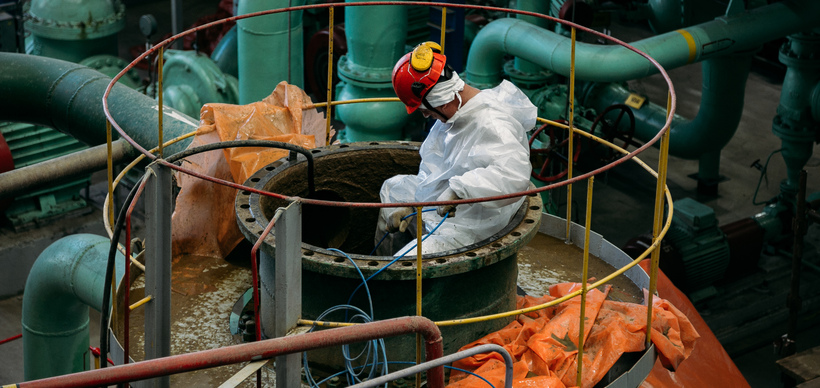Hazards Of Oxygen Deficiency In Confined Space
Hazards Of Oxygen Deficiency In Confined Space
June 21, 2023 |
Oxygen deficiency or hypoxia is a condition with a shortage of oxygen. Oxygen is vital for the survival of life on Earth. Our bodies cannot survive for more than 10 minutes without oxygen. Oxygen deficiency is caused by temperature, humidity, pollutants, and confined spaces, but these are not the only reasons behind this situation. When there is an increase in carbon dioxide levels than oxygen levels, it results in hypoxia (a state where blood does not contain sufficient oxygen). This leads to unconsciousness or death if it goes unchecked for too long. So oxygen deficiency in confined space needs to be monitored properly.
Causes Of Oxygen Deficiency
There are a number of causes of oxygen deficiency. They include:
- Air pollution
- Chemical reactions
- Physical barriers, such as walls and floors that block fresh air flow into the space. For example, if you are working in a basement and there is no ventilation system installed, then you will likely experience oxygen deficiency if the windows are closed or blocked by blinds or curtains.
- Poor ventilation systems that lack adequate fresh air in confined spaces (i.e., rooms). This can happen when there is insufficient airflow through cracks around doors/windows/wall joints; it’s also common in areas where no recent maintenance work is done on heating systems or air conditioning units (ACs).
- Heat sources that generate excessive heat, such as welding torches or open flames
Dizziness
Dizziness is a common symptom of oxygen deficiency caused by reduced oxygen levels in your blood. As the concentration of oxygen drops, your brain has less energy to function normally, so you may start feeling dizzy or lightheaded. If you don’t increase the amount of available oxygen quickly enough, this can lead to loss of consciousness and death.
Dizziness can be treated by increasing the amount of available oxygen through simple means such as opening windows or doors and turning on fans so that there is better ventilation. However, it is essential not to forget about monitoring air quality while doing this-it’s possible that other gases could enter your confined space at higher concentrations than normal (such as carbon monoxide), which could also contribute towards making people feel ill!
Behavioral Changes
Behavioral changes can be a sign of oxygen deficiency. The inability to concentrate, make decisions, and communicate are common symptoms. People may also have difficulty performing tasks or thinking clearly.
In addition to these behavioral changes, you should be aware that some people under the influence of anoxia may become aggressive or belligerent as they lose their inhibitions due to lack of oxygen (known as “excited delirium”).
Fire And Explosion
This is because when there is less oxygen available to burn, the fuel will continue burning hotter and faster than normal. This results in a build-up of heat within the confined space that may cause flammable materials or vapors (gases) present to ignite spontaneously, resulting in an explosion. The heat produced by this reaction can cause other nearby combustible materials, such as oil or grease stored on-site, to also catch fire.
Loss Of Consciousness
Loss of consciousness is a dangerous condition that can occur when the body does not get enough oxygen. The brain needs oxygen to function, so when you lose consciousness, your body stops receiving enough air and blood flow to support it. This can be caused by exposure to high concentrations of harmful gases (such as carbon monoxide) or low oxygen levels (less than 17%).
Loss of consciousness is widespread during confined space entry because workers may enter a space without knowing how long they will be inside- a situation that makes it difficult for them to monitor their own safety conditions and those around them.
Respiratory Failure
Respiratory failure is the inability to breathe. A lack of oxygen or excess carbon dioxide in your bloodstream causes it. If you have respiratory failure, you’ll feel dizzy, lightheaded, and weak. You may also have a headache or chest pain.
Your body needs oxygen to live, so if you don’t get enough of it through breathing (for example, by drowning), your organs will fail one by one until they eventually stop working altogether – resulting in death!
Death
Death is the most severe consequence of oxygen deficiency in confined spaces. It can occur when a worker enters an enclosed area and does not have sufficient oxygen to sustain life or if they become unconscious while inside. Death may also result from exposure to toxic gases such as carbon monoxide, hydrogen sulfide, and methane gas, produced by incomplete combustion of flammable materials like oil or propane tanks.
